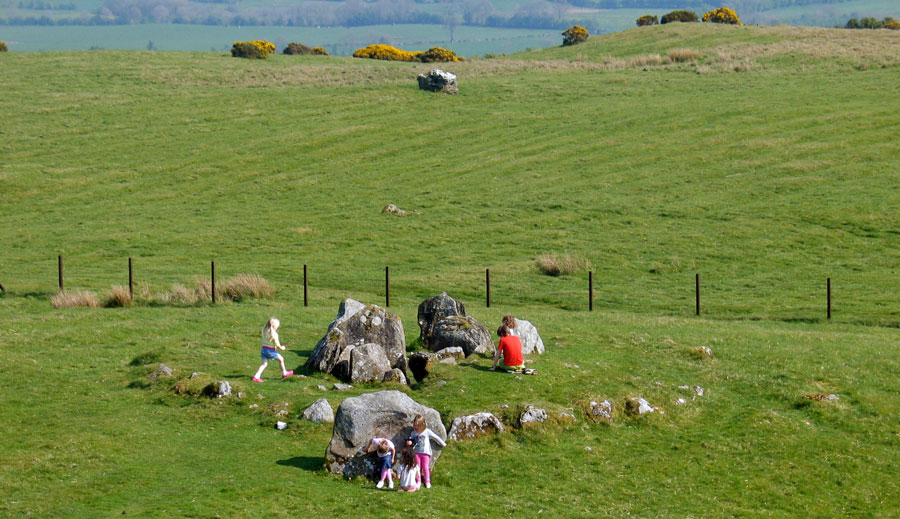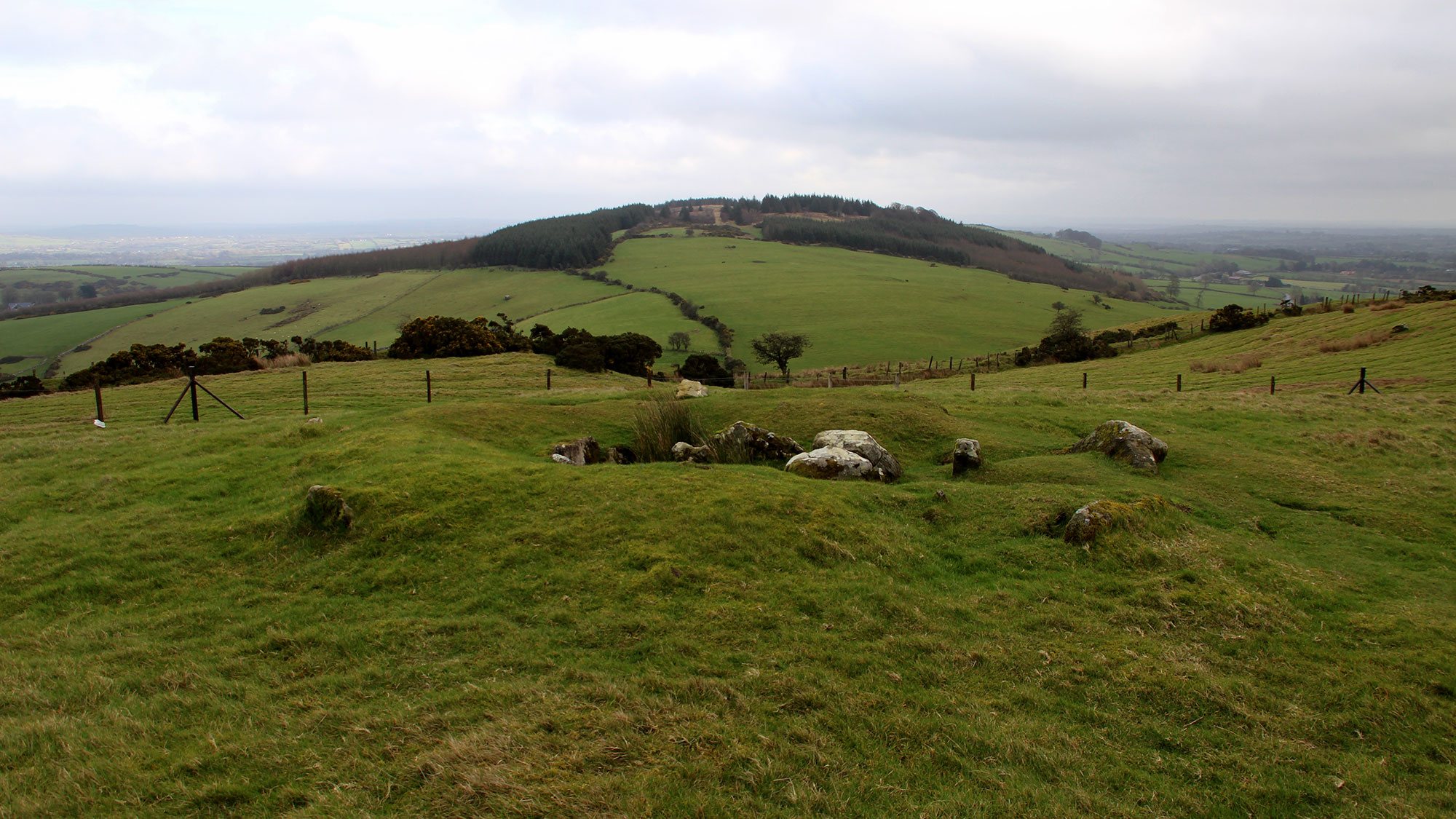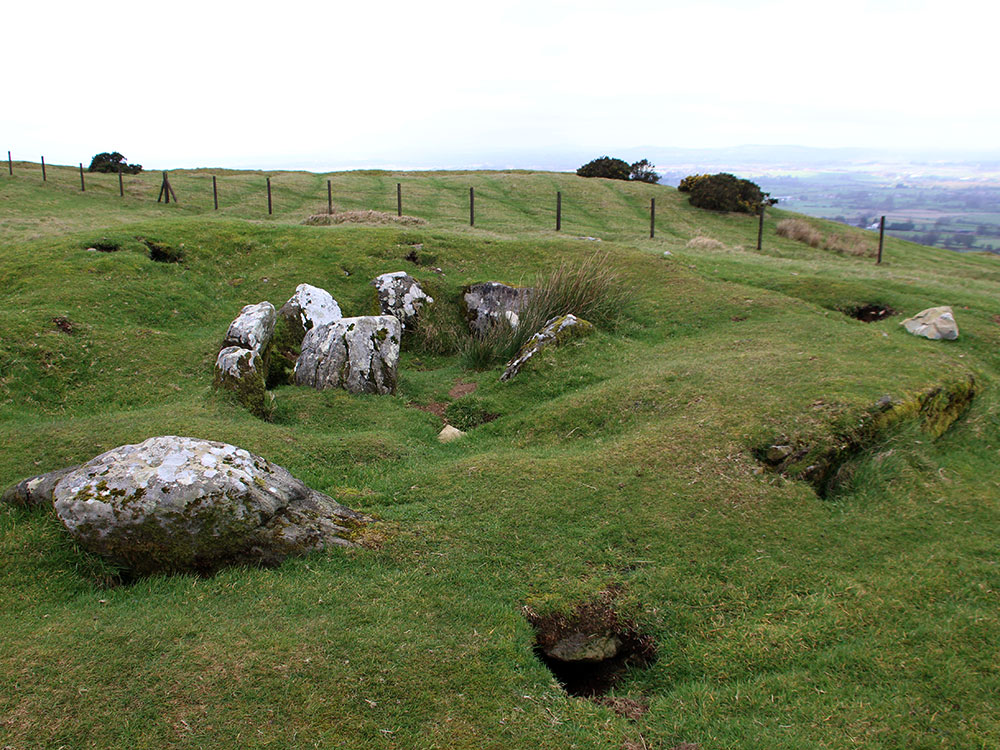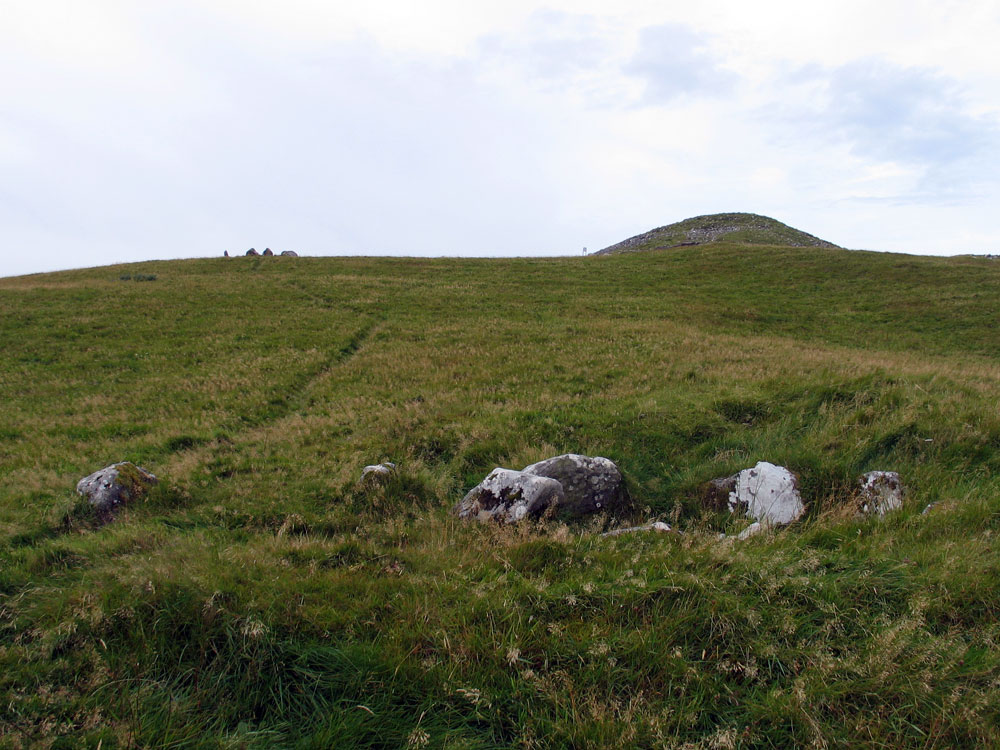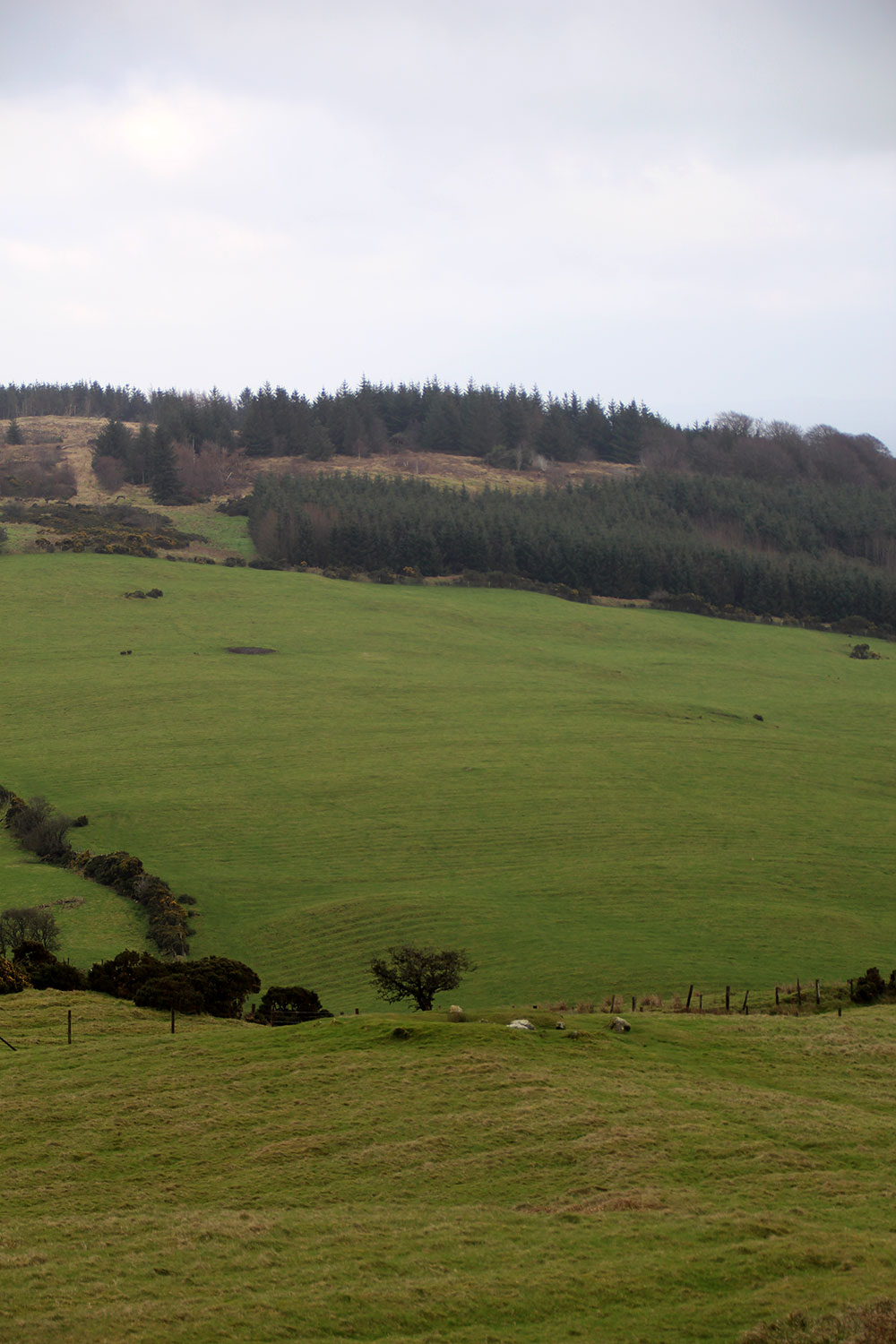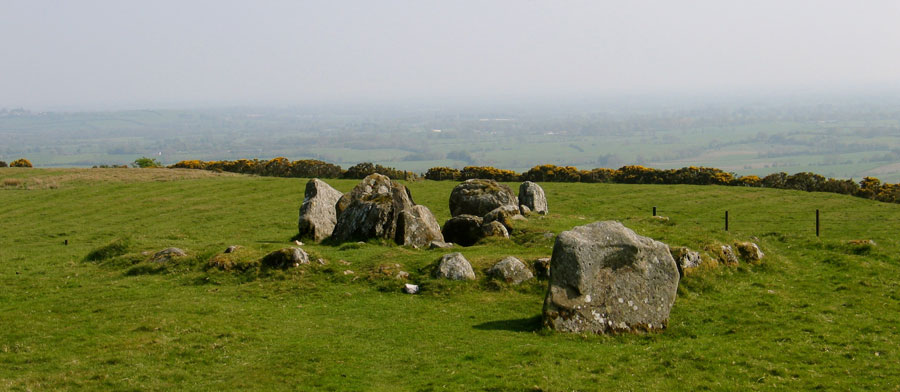Cairn V
Cairn V, to the south-east of Cairn T, is about 10 meters in diameter, and has a ring of small, uniform kerbstones. Several large slabs appear to be the orthostats of a chamber with five compartments, with two loose flags which may be floor stones or corbels. The chamber is constructed on a low platform within the circular kerb, much like the earliest monuments of this type at Carrowmore in County Sligo.
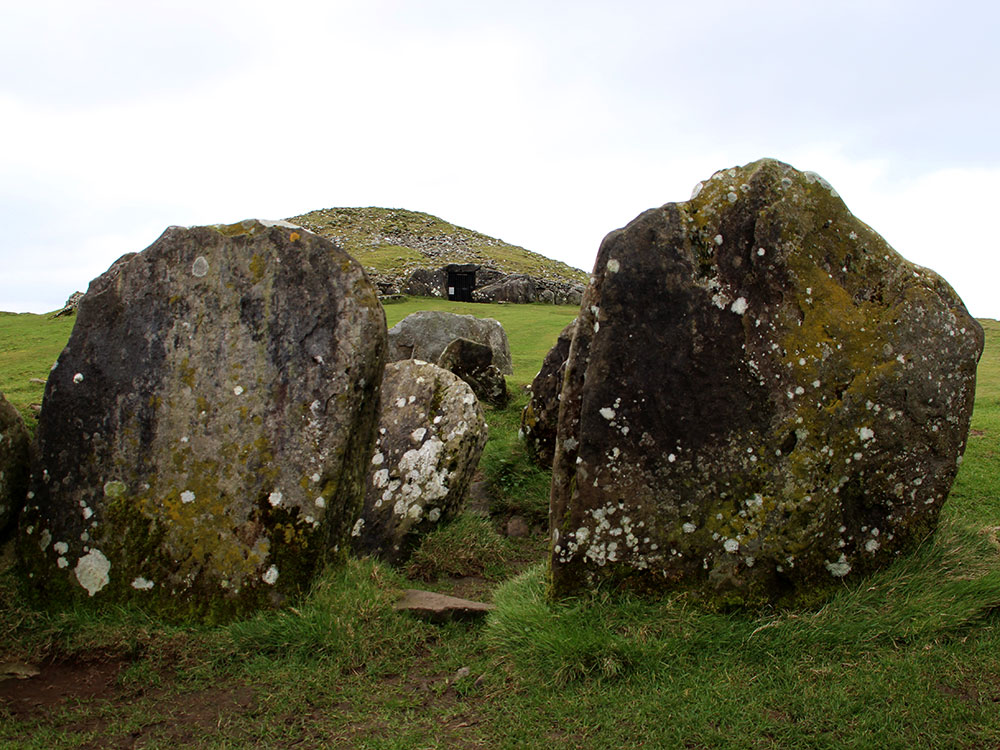
The passage is oriented towards the entrance to Cairn T, possibly indicating that it is an older monument. Martin Brennan thought the chamber was oriented to the winter solstice sunset. A large flat slab stands one meter out from the kerb on the northwest side, in the direction of Cairn T, outside what appears to be the entrance to the chamber.
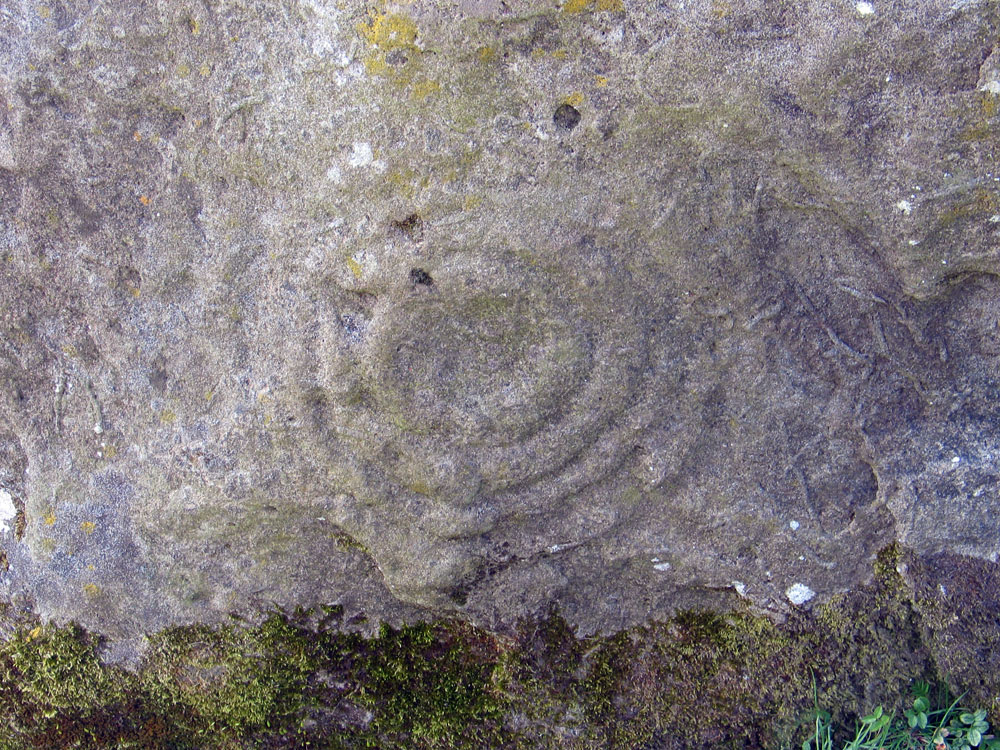
The chamber has a double cruciform plan, with an end recess and two recesses on each side, all composed of large slabs. Engravings can be made out on four of the remaining chamber stones, though as of 2019 thay have become extremely weathered. Conwell found a 'long rounded white sea-pebble, which from appearances, may have been used as a sling-stone, or a hammer' by the outer stone.
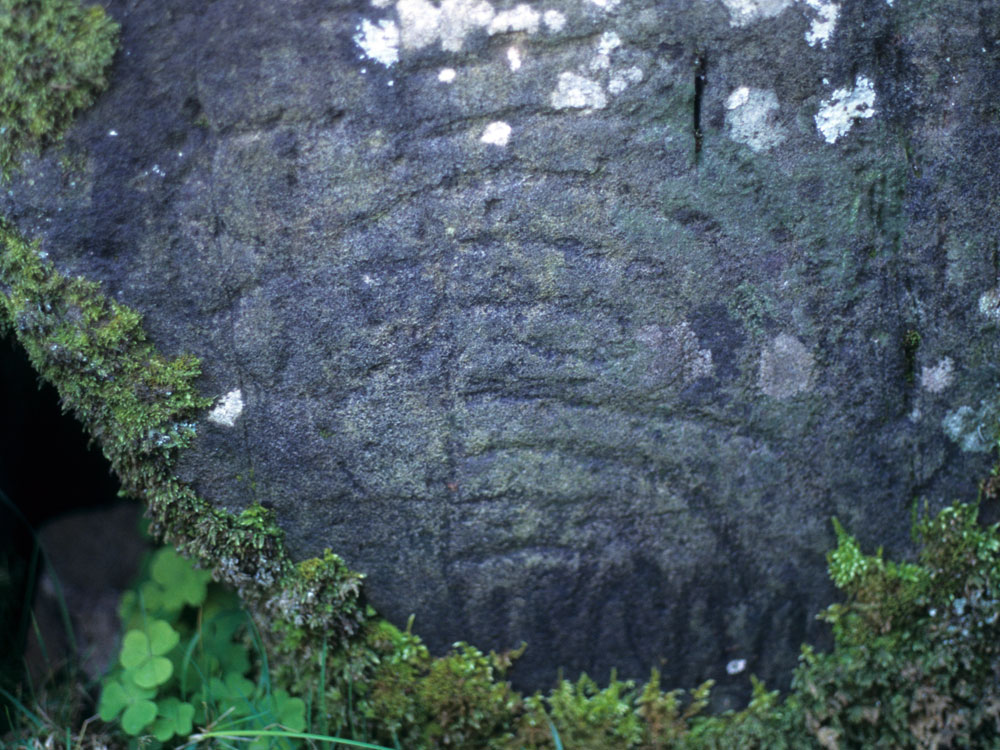
It is likely that this monument, an early form of passage grave, was never covered with a cairn of stones like nearby Cairn T. The earliest monuments consist of free-standing chambers placed on raised mounds or platforms called tertres in the Carnac region. These types of early monument are often considered to be incomplete or robbed-out, but many may, in fact look like they did when first built.

